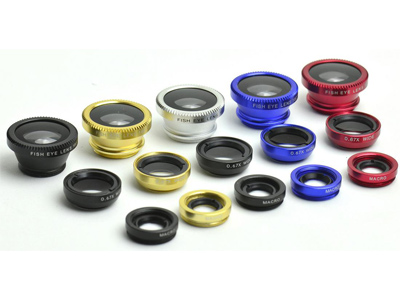Optical components are often subject to contamination in certain ways. Pollution is typically kept to a minimum by placing the optical components back in their housings after use or by covering them to avoid surface exposure. However, even with these preventative measures, optical components eventually accumulate dust, stains, or other types of contaminants.
Avoid touching the surface of optical components with unprotected fingers, and always wear powder-free gloves or finger cots. The first step to cleaning any silent optical component is to blow off the surface dust or loose particles using a dust-free blower (using a dry nitrogen or carbon dioxide blower) or a camel hair brush. This reduces the possibility of scratching the optical component during the specific cleaning process. Other compressed gas products are not recommended, as propellants may be released as liquid droplets on the surface. Note: This is generally the only cleaning method allowed for bare metal, soft coatings, and thin films. Such surfaces should never be touched.
In this process, the optical component needs to be removed from any base it is attached to and placed in a clean room environment. In many cases, it is helpful to first clean the side of the optical component to prevent dirt or excess polishing agents from being absorbed into the polished surface.
Use the air blowing method first. Place a drop of methanol or reagent-grade acetone on one side of the lens paper. Hold the edge of the optical component with another hand. Gently place the moistened area of the tissue on the optical component. Slowly drag the lens paper over the surface, applying the same amount of pressure until both the lens paper and the surface become dry. Repeat the process with fresh lens paper if necessary. Note: Be careful not to drag any dirt on the surface, as this could scratch the surface.
If the optical components cannot be removed from its fixed location or requires stronger cleaning, the next step is to use lens paper to wipe along the methanol and acetone sides.
Use the air blowing method first. Fold a piece of lens paper so that the folded edge is slightly longer than the size of the optical component. Hemostat is especially well-suited to securing the folded tissue in place. Wet the folded edge of the tissue with acetone. Continuously wipe the optical component with lens paper. Apply some pressure on the cloth to remove stubborn stains. Note: It is important to wet the tissue with acetone or alcohol before use, do not rub the surface back and forth, which may increase the possibility of surface scratches or coating damage.

 Call us on:
Call us on:  Email us:
Email us:  R&D Center: 9B-4F 401,No.1 Qingnian Road Liando U Valley,Yuhua International Wisdom Valley, Nanjing, 210039 China
R&D Center: 9B-4F 401,No.1 Qingnian Road Liando U Valley,Yuhua International Wisdom Valley, Nanjing, 210039 China









 English
English  cn
cn  de
de  es
es  fr
fr 


